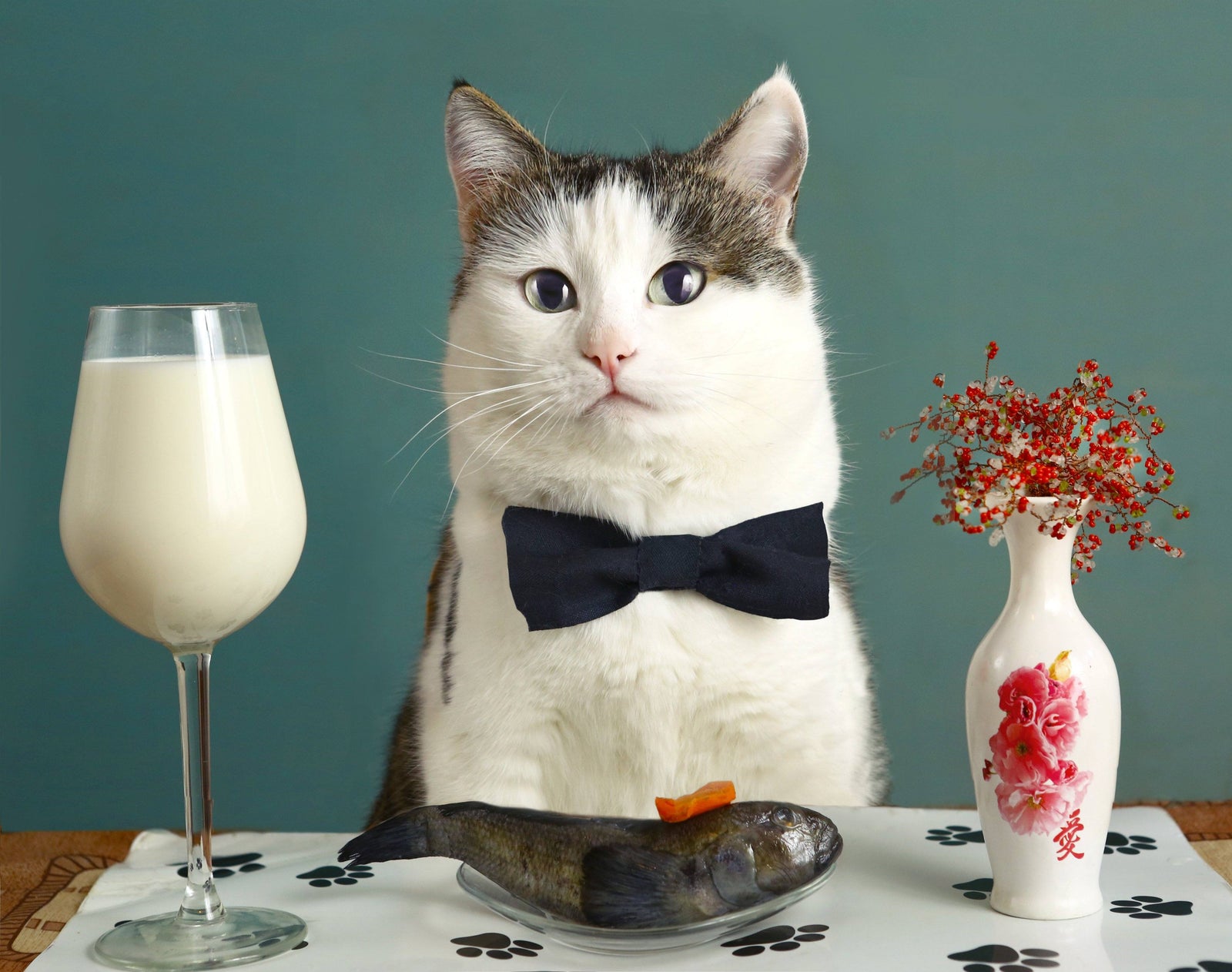
If you’re one of the millions of Americans who has oooo’d and awww’d at the adorable (and well-dressed) cat eating raspberries and peas on YouTube, you may be left wondering if your cat could eat from your produce drawer.
But while fruits and vegetables are ideal for a healthy human diet, your cat needs a different combination of macros.
Here’s what you need to know about healthy homemade cat food.
Cat Nutrition
Cats need a specific number of calories each day depending on their age, weight, and whether they’ve been spayed or neutered. To find out how many calories your cat needs each day, use this nutrition calculator for cats.
Once you know your cat’s calorie needs, you’ll need to calculate how much of each macronutrient you should include in your cat’s homemade food. Macronutrients include carbs, fat, and protein. Each contributes a different number of calories to your cat’s diet and should be balanced carefully.
Your cat’s diet should be composed of 52 percent protein, 35 percent fat, and 12.5 percent carbs.
Protein

Cats are carnivores by nature, so restricting your cat to a fruits-and-veggies only diet can be extremely harmful. In fact, cats need at least 2 grams of protein per pound of body weight. So if your cat weighs 10 pounds, she needs 20 grams of protein per day. Since each gram of protein contains 4 calories, that’s 80 calories from protein alone.
The best forms of protein for your cat are animal-based proteins. Unfortunately, most dry cat foods contain mostly plant-based proteins. If you’re making healthy homemade cat food, choose options like chicken, turkey, and fish. Be sure to cook any proteins you use as raw or undercooked meats can contain bacteria that are harmful to your cat.
Some cats may also enjoy lean red meat like lamb. Avoid options like beef or pork as these can include unhealthy additives, excess sodium, and tend to be higher in fat than chicken, turkey, or fish.
Fat

After protein, fat is the next most important component of your cat’s diet. Fats help your cat breakdown and use essential vitamins and are the primary source of energy. However, fats contain 9 calories per gram, so your cat only needs a tiny amount of fat to meet her daily needs.
Fat should account for about 35 percent of your cat’s diet. If you’re using fatty fish like salmon in your cat’s diet, you may not need to add much else. Healthy sources of fat for your cat’s homemade food include unsaturated vegetable oils and animal fat.
Some cats with health problems require low-fat diets, however. Check with your veterinarian to make sure you’re giving your cat a healthy amount of fats.
Carbs

By nature, cats need a minimal number of carbs. In fact, your cat’s tongue doesn’t even have sweet taste receptors. Plus, your cat’s digestive system isn’t equipped to break down starches. So choosing the right carbs to include in a small amount is critical.
The best source of carbs for your cat is unprocessed, natural foods with a high water content like fruits and vegetables. However, options like grapes, raisins, onions, garlic, and avocado are toxic to cats.
For healthy homemade cat food, stick to apples, pears, cucumbers, carrots, zucchini, and watermelon.
If you’re thinking about making your cat’s food from scratch, there are a lot of great benefits, but understand that it’s a labor of love. Pay attention to the ingredients you’re using and make sure you’re meeting all of your cat’s nutritional needs. Consult your veterinarian if you have any questions or concerns.
---


Follow Us